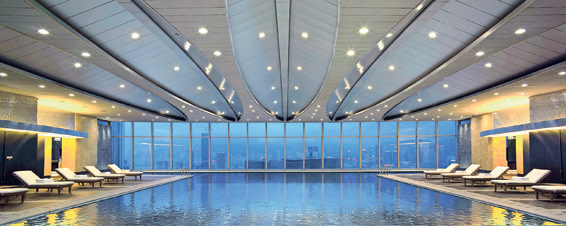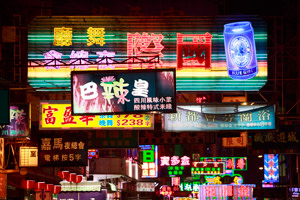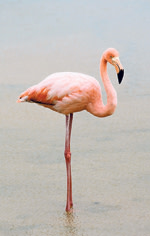Hong Kong’s West Kowloon Cultural District – and its real estate

Simply sign up to the Life & Arts myFT Digest -- delivered directly to your inbox.
Hong Kong has long been known as a city of trade and finance, but rarely one of culture. Despite the slogan “Asia’s world city”, it remains sorely lacking in the theatres, museums and music venues such a label might suggest. Most artistic endeavours have been driven – or torpedoed – by commercial interests, thanks to exorbitant rents and a particularly cut-throat form of capitalism. The drab signage for the once-promised culture park – standing dusty and alone on the edge of barren wasteland – long seemed a symbol of faded ambition.
Now, however, more than 15 years after the idea was first put forward, construction is finally under way on the West Kowloon Cultural District (WKCD), an area of scrub sitting at the foot of the ICC, Hong Kong’s tallest building, on the western edge of the Kowloon peninsula. Groundbreaking ceremonies took place last year at two of the planned 16 venues: a contemporary art museum called M+, which, at 62,000 sq metres, will rival New York’s MoMA in size, and the Xiqu Centre, a sleek modern venue for traditional Cantonese opera. Both are due to open in about three years’ time.
Today, the area is lit up by the sparks from welding torches, as the city’s ambitions to become Asia’s focal point for the arts begins to be rendered in concrete and steel. The final plans include theatres, art galleries and music venues – all set along 2km of harbourfront and offering postcard views of the Hong Kong skyline. The entire site will cover 40 hectares, including 23 hectares of open public space.
“It’s perhaps the most visionary cultural project anywhere in the world. It’s a very complex jigsaw,” says Michael Lynch, chief executive of WKCD. “Once realised, it will fundamentally transform the cultural ecosystem in Hong Kong.”
Rumbling beneath the parks and promenades will be something even more ambitious – a station for the new high-speed train line. With echoes of the colonial-era Canton railway that chugged away from the doorstep of Hong Kong’s Peninsula Hotel, the new line will cut the journey time to the southern Chinese metropolis of Guangzhou to about 45 minutes from the current two hours.
Costing about $8.5bn, the completed station will plug Hong Kong into China’s vast and growing high-speed rail network, putting the city a short ride away for tens of millions of people in some of the mainland’s wealthiest places.
Once open, the combination of world-class cultural venues and ultra-modern transport infrastructure could further shift the city’s epicentre from Hong Kong Island’s Central district to the West Kowloon peninsula.

Already a number of investment banks, including Morgan Stanley and Credit Suisse, have relocated to the ICC in search of lower rent, more space and better facilities. The building has a fast train linking it to Hong Kong airport in just 20 minutes, an important factor for bankers and executives based in the city but responsible for a region stretching from Mumbai to Tokyo.
Housing supply in the area is limited to just five developments: The Arch and The Harbourside, which offer the most direct views over Hong Kong island, plus the five-towered Sorrento, The Waterfront and The Cullinan, home to the W Hotel.
Were this almost any other city, property prices in the area would surely be soaring in anticipation. Yet, the local residential market is in a funk, following one of the world’s most fevered property booms.

From their early 2009 low, prices in West Kowloon rose dramatically. At their peak in 2012, average prices had risen 160 per cent, according to Savills. Much of this increase was driven by demand from mainland Chinese buyers, who liked the convenient transport links to Hong Kong airport and the city centre, as well as the range of facilities on offer in most of the buildings. Chinese investors also have a long record of choosing brand new apartments, making West Kowloon a natural fit. With interest rates near zero, many of the flats in the area have been left empty rather than rented out.
“Mainlanders have shown a clear preference for the area. They’ve been significant buyers in some of these buildings, and they’ve not been put off by the prices,” says Simon Smith, head of research at Savills.
Though still expensive by global standards – Savills rates Hong Kong as by far the most expensive city in the world for housing – costs per sq ft are competitive when compared with longstanding expat banker havens like the Mid-Levels or Stanley.

Typical three-bedroom apartments in The Cullinan and The Arch – the more expensive buildings in West Kowloon – sell for up to HK$30m ($3.87m), and about HK$25m in The Harbourside. Similar-sized flats in Happy Valley and Mid-Levels can go for HK$45m, while on the Peak prices range from HK$60m to HK$90m.
However, low occupancy rates have compounded the inherent lack of atmosphere in this collection of bland concrete towers thrown up on a patch of empty scrubland. Any visitor to West Kowloon will quickly notice the sometimes eerie quiet over an area that has thousands of living spaces but often few people. Hong Kong’s famous bustling street life – its cleaver-wielding butchers and steamy noodle joints – is completely absent here. You could be anywhere on earth.

The facilities are also at risk of putting opulence over convenience. In the shopping centre that sits underneath the residential developments a French deli and HMV both recently shut down, to be replaced by Givenchy and Balenciaga, while its lone bookshop is now boarded up, leaving a single high-end supermarket and a small chemist to serve the daily needs of those living upstairs. Buying a newspaper or a pint of milk is no simple chore. “During the past three years, we’ve seen so many shops close down, to be replaced by another luxury goods store,” says René Nobel, a broadcasting consultant from Amsterdam, looking down from his balcony on the 80th floor of The Arch. “We need basic facilities. We don’t need any more shoe stores, handbag stores, luxury watch shops.”
Even so, most residents seem content with the trade-off. In return for their swimming pools, saunas and sweeping vistas of Hong Kong harbour, they are prepared to spend an extra 15 minutes walking in search of “real Hong Kong”. One road takes you quickly to Temple Street, a buzzing tourist market best known for its small army of fortune tellers. Another route through nearby Kowloon Park, home to a flock of pink flamingos and the city’s biggest mosque, brings you out on Nathan Road, a dazzling display of neon teeming with traders from around the world. This is where you go for Rolexes – real and fake – cut-price electronics and suits made-to-measure in 24 hours flat. This is the Hong Kong of our imagination.

“Although it’s very modern, it’s quite local in some ways. Most residents are either local Hong Kong residents or they are from mainland China, and so you get a different taste of Hong Kong,” says Candice Sun, who lives in nearby Olympic and works at Deutsche Bank in the ICC. “If you go down to street level, you still have a lot of the local flavour that helps define Hong Kong.”
As with much of Hong Kong’s high-end housing, West Kowloon’s residential market has gone into reverse. Prices are at present about 13 per cent off the highs, in line with falls elsewhere in the city, after the government introduced cooling measures – such as a tripling of stamp duty on purchases made by foreigners. It also coincided with the economic slowdown in China, a crackdown on corruption and lavish spending by the new government in Beijing, and the prospect of higher borrowing costs as the US Federal Reserve begins tapering its asset purchases. Knight Frank expects property prices to fall up to 15 per cent by the end of the year, while many analysts are even gloomier.

There are also question marks over how the finished WKCD will look. The government is moving slowly on many key decisions, meaning it will be many years before the project is finished. Already work on the train station has been delayed, officially because of damage caused by a recent rainstorm. Construction on the cultural venues has also been set back as a result. “The longer anything is left untouched in Hong Kong, the more the risk that someone wants to undo or change parts of the project,” says Lynch.
Agents say the WKCD and the high-speed train will ultimately prove supportive to property prices in the area. However, potential buyers must weigh up the risks of investing now in a market many believe has much further to fall. And regardless, residents will find themselves living next to a building site for the next decade.
Josh Noble is the FT’s Asia Regional Markets correspondent
——————————————-
Buying guide
● Property prices in West Kowloon have fallen about 13 per cent from their 2012 peak, in keeping with drops elsewhere in the city
● Kowloon Station is one stop away from central Hong Kong island, and about 20 minutes from the airport
● Hong Kong’s crime rate has fallen steadily over the past few years. In 2013, police recorded 1,015 crimes per 100,000 people, compared with 9,500 in London, and 10,455 in Paris
● West Kowloon’s ICC is home to the Ritz-Carlton hotel. Inside is the world’s highest bar (on the 118th floor) and Michelin-starred restaurants, Tin Lung Heen and Tosca
What you can buy for . . .
HK$5m Nothing. Prices in nearby Olympic start at about HK$7m
HK$15m A 750 sq ft two-bedroom flat in The Harbourside with a view over Kowloon
HK$30m A 1,000 sq ft, three-bedroom apartment in The Arch with a view of Hong Kong harbour
——————————————-
Letter in response to this article:
Writers too are artists who need patronage / From Ms Kelly Falconer
Comments